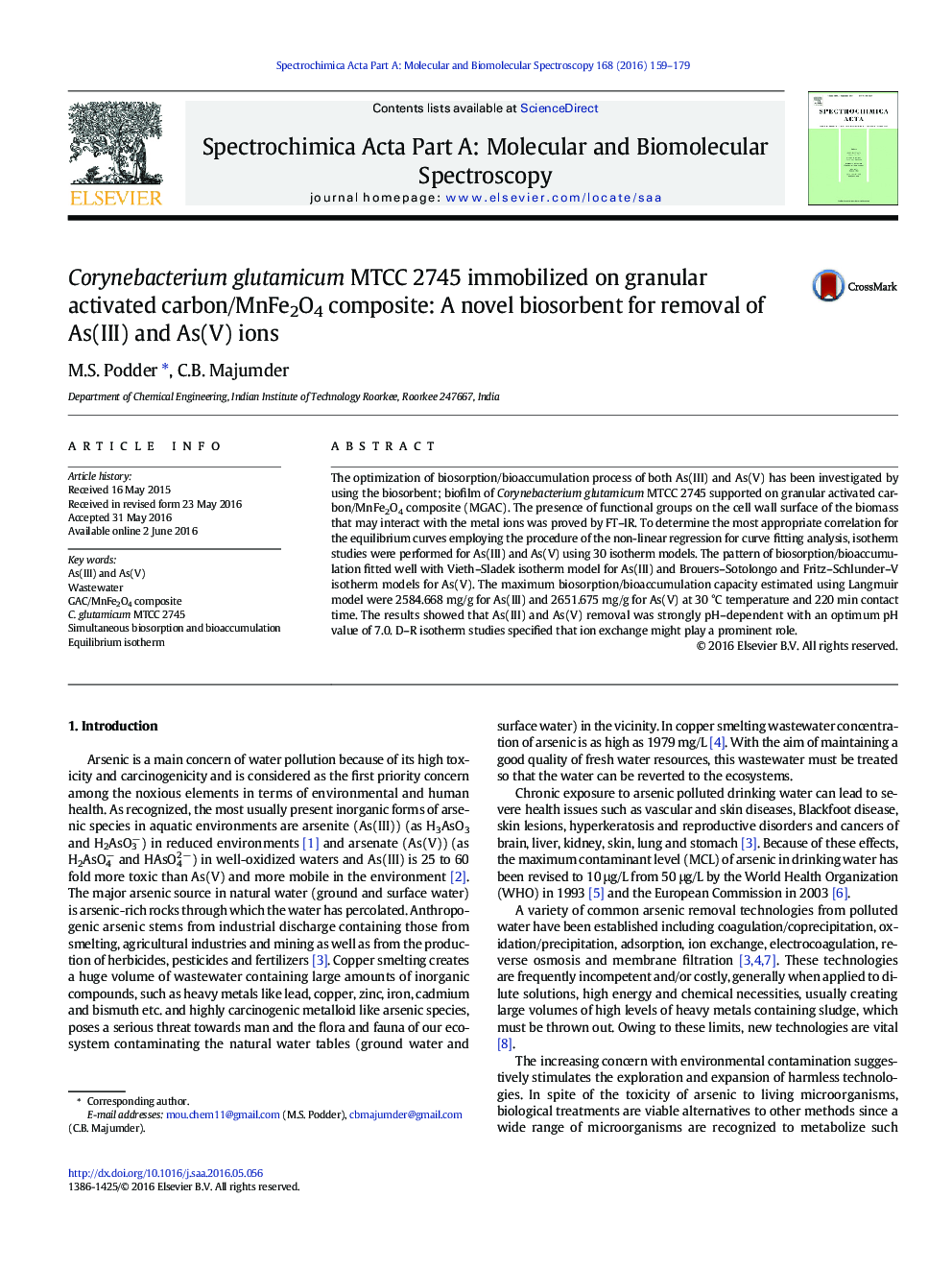| کد مقاله | کد نشریه | سال انتشار | مقاله انگلیسی | نسخه تمام متن |
|---|---|---|---|---|
| 1230421 | 1495201 | 2016 | 21 صفحه PDF | دانلود رایگان |

• Optimization of SBB process parameters using C. glutamicum MTCC 2745 immobilized on GAC/MnFe2O4 composite was done.
• Non-linear regression analysis was employed to identify the best–fit isotherm.
• Different error functions were used to determine the best–fit isotherm.
• Effects of co-existing ions on SBB of As(III) and As(V) using immobilized bacterial cells was investigated.
• Desorption study was done using different concentration of NaOH solution.
The optimization of biosorption/bioaccumulation process of both As(III) and As(V) has been investigated by using the biosorbent; biofilm of Corynebacterium glutamicum MTCC 2745 supported on granular activated carbon/MnFe2O4 composite (MGAC). The presence of functional groups on the cell wall surface of the biomass that may interact with the metal ions was proved by FT–IR. To determine the most appropriate correlation for the equilibrium curves employing the procedure of the non-linear regression for curve fitting analysis, isotherm studies were performed for As(III) and As(V) using 30 isotherm models. The pattern of biosorption/bioaccumulation fitted well with Vieth–Sladek isotherm model for As(III) and Brouers–Sotolongo and Fritz–Schlunder–V isotherm models for As(V). The maximum biosorption/bioaccumulation capacity estimated using Langmuir model were 2584.668 mg/g for As(III) and 2651.675 mg/g for As(V) at 30 °C temperature and 220 min contact time. The results showed that As(III) and As(V) removal was strongly pH–dependent with an optimum pH value of 7.0. D–R isotherm studies specified that ion exchange might play a prominent role.
Figure optionsDownload as PowerPoint slide
Journal: Spectrochimica Acta Part A: Molecular and Biomolecular Spectroscopy - Volume 168, 5 November 2016, Pages 159–179